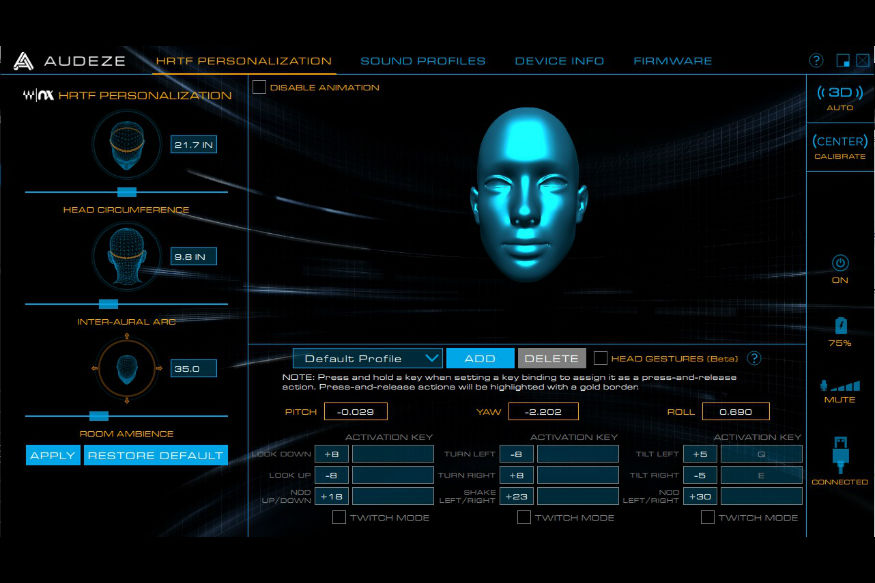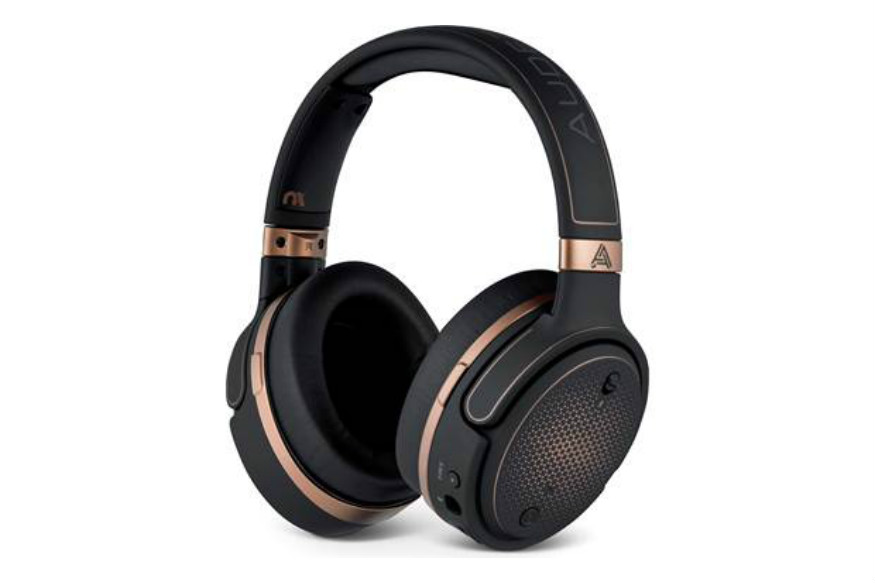“Developing a hobby in good audio does not really need to cost too much,” said Raghav Somani, the founder and chief executive of the premier audio portal, Headphone Zone, when I met him recently. There’s perhaps no line that better sets the premise for the Audeze Mobius — a pair of headphones that most of you might not have heard of. Truth be told, Audeze is not an entirely mainstream brand, and operates in a much more niche space in the audio industry than the likes of Bose and Sony, which dominate today’s ‘premium’ mainstream audio space. And yet, the Audeze Mobius squares off sharply against the likes of the Sony 1000XM3 and the Bose QuietComfort 35 II — two of the most popular headphones that offer oodles of technology, fancy leather and the sense of plush sound, at a price of Rs 30,000.
For the Audeze brand, the mainstream market wasn’t quite the target. Some of its most iconic products fall well within the ultra-premium space that only audiophiles and firm hobbyists care to explore. So, when they built a pair of headphones for the masses, the onus was on bringing the goodness of their planar magnetic expertise into an affordable format, while appealing to an entirely different category of users that invest in audio — gamers. What they built in the Mobius, though, is much more than just flashy tech for the gizmo-savvy.
The core technology
Straight off the bat, the Audeze Mobius does not use a standard dynamic driver. Instead, it uses technology from Audeze’s signature planar magnetic drivers inside the closed back Mobius, in an attempt to stand out from the crowd of headphones with its sheer composure of sound, the frequency balance and the pristine clarity. To explain that, let me briefly explain exactly how this technology differs.
The most common type of drivers are referred to as dynamic drivers, and these power a wide range of headphones ranging from the least expensive to the considerably pricey, such as those by Sony, Bose or Bowers & Wilkins. In these drivers, an ultra thin coil carrying current (the audio signal played by a source) is passed through a magnet arrangement, like in typical electromagnets. This creates an electric ‘flux’ or a field of charge, which causes the coil to move depending on the charge being passed through it. One end of this coil is attached to a diaphragm, which vibrates in accordance to the coil. This, in turn, compresses and decompresses the air between your ears and the diaphragm itself, hence generating sound that can be heard.
How planar magnetic drivers differ, is by replacing the diaphragm with a thin film embedded with electrical circuit, which is suspended in between sets of highly precise and powerful permanent magnets. When current is passed through this circuit, the interaction of its field with the magnets cause the diaphragm to move, and with high precision because of the intrinsic property of how magnets react in electric fields. In essence, this makes the air compression and decompression around the film to be faster, more precise and less erratic. What this translates to in audio parlance is precise sound, very high clarity, minimal distortion and an accurate representation of what the original audio signal within the electric circuit in the driver intended to represent. Such factors are often lost in part when played through dynamic drivers, simply because even the best of dynamic drivers contain elements that will cause harmonic distortion or lead to loss or marginal alteration of the intended signal.
Audio performance
In everyday terms, what this means is that standard digital sources, which can be connected to the Audeze Mobius via Bluetooth, USB or 3.5mm unbalanced input, will sound far more precise than the widely accepted standards of the ‘premium’ wireless headphone segment. There is a sense of precision in the hi-hat rolls in Red Hot Chili Peppers’ Hump de Bump, a pleasant and very precise depth in the bass roll of Pink Floyd’s Hey You, near-pinpoint accuracy of notes in Guns & Roses’ November Rain, and a clear sharpness in Steven Tyler’s soaring vocals in Aerosmith’s I Don’t Wanna Miss a Thing.
It is, however, important to keep in mind that there are two compromises with the Mobius. First, the Mobius was conceptualised as a pair of planar magnetic headphones meant for gaming. As a result, the audio signature of the Mobius is very clearly biased towards the mid frequencies, with rollover of emphasis to highs. What this means, is that in many tracks where you may be used to hearing a much higher level of bass, the Mobius’ drivers deliver far more emphasis to the vocals, as well as higher-mid frequency elements such as the higher notes of a guitar, or drum hi-hats and cymbals.
While this depends a lot on the kind of sound you prefer, using the Mobius primarily for listening to music can have you feel that the bass performance is inadequate, or lead you to use an equaliser on your source device. The bass delivery of the Mobius exhibits astute levels of control and composure, with a level of tightness that adds traces of warmth to how the overall audio sounds. The greatest strength of the Mobius lies in its timbre, which is where the planar magnetic drivers come into play. The sharp attack-decay envelope of the sound, thanks to the precision drivers, mean that everything sounds faster and sharper.
You will begin noticing fine gaps in the double bass beat of Cradle of Filth’s Nymphetamine, or even in the piano keys being played in Nightwish’s Nemo. The reason for this is the precision of the drivers, which offer super-fast audio response time, and hence creates the perceived sense of ultra-high clarity, particularly in comparison to the best of Bose and Sony in personal audio. The timbre becomes even more evident as you switch to genres such as Bollywood, where the precision of sound creates a rather unique auditory experience.
It is this, though, that many might find a bit awkward. The high clarity, precision and sharpness means that many may find the audio signature and timbre a bit too sharp, and painful to the ears over long hours of listening. This holds true even for those who are already used to planar magnetic drivers, and the Mobius is not really ideal for long listening hours. However, for the duration that you do listen to it, the Audeze Mobius has the panache to often create emotions, particularly in tracks such as Pink Floyd’s High Hopes, Led Zeppelin’s No Quarter, and Daft Punk’s Contact.
Spatial tracking and emulation
The audio performance is further added to by the Mobius’ gamer-specific abilities. These include 3D spatial audio distribution, room space emulation and head tracking, enabled by a mix of hardware such as gyroscopes, and software that is based on Waves NX digital signal processor to enable 3D depth emulation of sound.

Enabling 3D audio creates a sense of three dimensional space that often feels like wearing a virtual helmet. The Waves NX-powered spatial emulation offers two features — head tracking and room space emulation. When you switch 3D audio on via the earcup button, the overall audio sounds a bit more spread apart, which is where the comparably expansive soundstage kicks in. it is nowhere near as wide as open back planar magnetic headphones such as Audeze’s flagship ones, but offers a nice sense of space that will let you listen to music on the Mobius for longer than you would without the spatial dispersion.
The spatial parameters can be somewhat controlled via the Audeze HQ desktop app, available on Windows and Mac platforms. The app is easy to set up, and offers plug-play control of the spatial distribution, while also adding a proprietary equaliser to better control the sound. You can enter your head width for pitch and yaw, and add the dimension of your room to add a more precise sense of space, and this leads to the Mobius offering algorithm-driven 5.1 and 7.1-channel audio, with actual spatial dispersion of source sounds, in a closed back headphone.
Over time, I often found myself switching the 3D mode off when just listening to music, and turning it on if the track list automatically switched to live concerts. However, the 3D audio mode isn’t reserved for music — where this truly makes a difference, is when you are watching movies or playing video games.
Movies and games
The marketing material states that the Audeze Mobius is primarily a gaming headset, and true to its word, comes with USB connections to hook it up with PCs. It also comes with a USB-C microphone that is thankfully detachable, and its premium design and uber-solid build defies the parameters set forth by mainstream gaming headsets. Switch this to the 5.1 and 7.1 channel audio sources, and the 3D audio becomes a gimmick that actually pays off.
In action movies (such as the Marvel Cinematic Universe lineup), the spatial audio can offer you an auditory experience that similarly priced headphones simply cannot. Furthermore, the mids-focused audio signature further comes to play here, offering pristine vocals and a clear sense of where the action is happening, even if you close your eyes. For gamers relying on close control of audio, the spatial distribution works even more, since approaching footsteps have a directional dimension now, and the gyroscope-based head tracking further helps you gauge direction.
In essence, it is this party trick of the Mobius that makes it stand out in the mainstream space. It creates a precedence for 3D audio developers, and sets the bar quite high. For many, this unassuming pair of premium headphones may not come with flashy LEDs. For still more, it is this that will appeal in terms of aesthetics.
Design, build and everything else
The variant that I borrowed from Somani features a copper strip around the middle of the earcups, with copper-finished head adjusters. The overall exterior is finished in rubberised plastic that feels smooth and plush in hand, and while Bose and Sony may look sleeker, there’s no denying that the Audeze Mobius looks premium as well. All buttons are neatly arranged around the left earcup, with a volume wheel, a mic volume wheel, the 3.5mm unbalanced audio port, a USB-C port and the 3D audio switch placed on the bottom edge. Higher up the left earcup is a single switch that you can flick to mute the connected microphone, and the headband and earcup feature memory foam to adjust to your head, over time.
The build quality has a sense of solidity that I sorely missed in the Bose QC 35 II. There are no creaks or undulations, and the Mobius feels incredibly well refined. Yes, I do feel that the design could have been better, but the use of planar magnetic drivers come with the downside of bulkier headphone bodies. Show anyone, and there is no denying that the Audeze Mobius is premium to the hilt. Show gamers, and you will most likely receive diverse opinions. For me, the Mobius’ design isn’t stellar, but still quite likeable.
Verdict
Despite not being out-and-out music oriented headphones, the planar magnetic drivers in the Audeze Mobius offer brilliant audio clarity, the sharpness of the timbre makes it stand out from the crowd by a mile, and the bright audio signature that is completely devoid of distortions will be liked by many. There is a slight attenuation in bass levels, but the overall composure of audio delivery makes it a delightful pair of headphones, no matter what genre of music you prefer. The 3D audio distribution works very well in movies and games, and while the design may not be the sleekest, at Rs 29,990, the Mobius is a worthy purchase simply based on its sheer performance.
Get the best of News18 delivered to your inbox – subscribe to News18 Daybreak. Follow News18.com on Twitter, Instagram, Facebook, Telegram, TikTok and on YouTube, and stay in the know with what’s happening in the world around you – in real time.

















